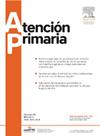Utilidad del score H2FPEF en el diagnóstico y pronóstico de las insuficiencia cardiaca con fracción de eyección preservada en atención primaria
IF 1.6
4区 医学
Q2 MEDICINE, GENERAL & INTERNAL
引用次数: 0
Abstract
Objective
To determine, in a group of patients with a diagnosis of heart failure (HF) in primary care, the probability of presenting heart failure with preserved ejection fraction (HFpEF) according to the H2FPEF score and its association with one-year morbidity and mortality.
Design
Cross-sectional descriptive study.
Setting
Seven primary care centres in Barcelona.
Participants
Patients with HF (ICD-10: I.50) and left ventricular ejection fraction ≥ 50%.
Interventions
analysis of electronic health record data from primary care and clinical interview with patients.
Main measurements
Clinical, laboratory and echocardiographic variables were collected. The H2FPEF score was calculated and patients were classified accordingly. The association between the score and the composite outcome (all-cause mortality or HF hospitalisation) at one year was analysed.
Results
A total of 628 patients were included, of whom 169 had complete data for score calculation. Of these, 47.9% had a high probability of HFpEF. These patients were older, with more comorbidities and worse functional class. The incidence of the composite event was higher in the high-probability group (64.4%) compared to the low/intermediate group (35.6%; P=.011). In multivariate analysis, high probability showed a trend towards association with the composite outcome (OR: 2.06; 95% CI: 0.96-4.54; P=.066).
Conclusions
The H2FPEF score is a useful and feasible tool in primary care for improving the diagnosis and risk stratification of morbidity and mortality in patients with suspected HF.
[H2FPEF评分在初级保健中保留射血分数的心力衰竭诊断和预后中的价值]。
目的:在一组在初级保健中诊断为心力衰竭(HF)的患者中,根据H2FPEF评分确定心力衰竭伴保留射血分数(HFpEF)的概率及其与一年发病率和死亡率的关系。设计:横断面描述性研究。环境:巴塞罗那的七个初级保健中心。参与者:HF (ICD-10: I.50)和左心室射血分数≥50%的患者。干预措施:分析来自初级保健和患者临床访谈的电子健康记录数据。主要测量指标:收集临床、实验室和超声心动图变量。计算H2FPEF评分并对患者进行分类。分析了评分与一年内的综合结果(全因死亡率或HF住院)之间的关系。结果:共纳入628例患者,其中169例患者资料完整。其中47.9%为高概率HFpEF。这些患者年龄较大,合并症较多,功能分级较差。综合事件的发生率在高概率组(64.4%)高于低/中级组(35.6%,P= 0.011)。在多变量分析中,高概率与综合结果呈相关趋势(OR: 2.06; 95% CI: 0.96-4.54; P= 0.066)。结论:在初级保健中,H2FPEF评分是一种有用且可行的工具,可改善疑似心衰患者的诊断和发病率和死亡率的风险分层。
本文章由计算机程序翻译,如有差异,请以英文原文为准。
求助全文
约1分钟内获得全文
求助全文
来源期刊

Atencion Primaria
医学-医学:内科
CiteScore
2.90
自引率
8.00%
发文量
156
审稿时长
33 days
期刊介绍:
Atención Primaria es una revista que publica trabajos de investigación relativos al ámbito de la atención primaria de salud. Desde el punto de vista conceptual, Atención Primaria asume el nuevo modelo de atención primaria de salud, orientado no sólo a la curación de la enfermedad, sino también a su prevención y a la promoción de la salud, tanto en el plano individual como en el de la familia y la comunidad. En estos nuevos aspectos que definen el modelo de atención primaria de salud es en los que se centran los trabajos de investigación que publica Atención Primaria, la primera revista de originales española creada para recoger y difundir la producción científica realizada desde los centros de atención primaria de salud sobre cuestiones como protocolización de la asistencia, programas de prevención, seguimiento y control de pacientes crónicos, organización y gestión de la asistencia primaria, entre otros.
 求助内容:
求助内容: 应助结果提醒方式:
应助结果提醒方式:


